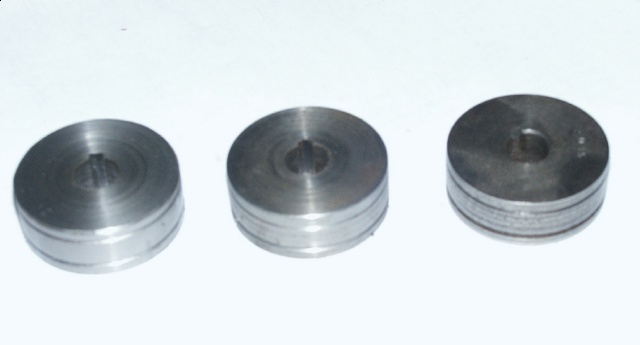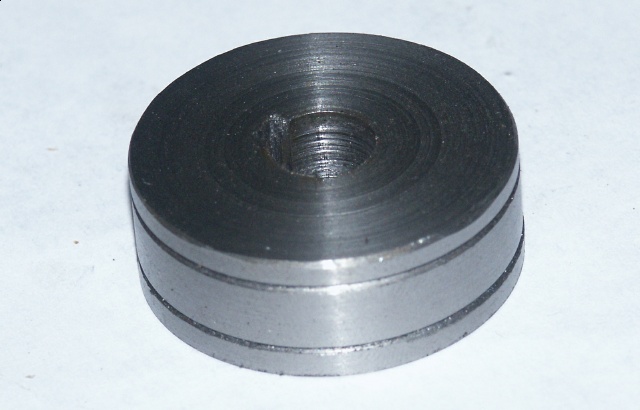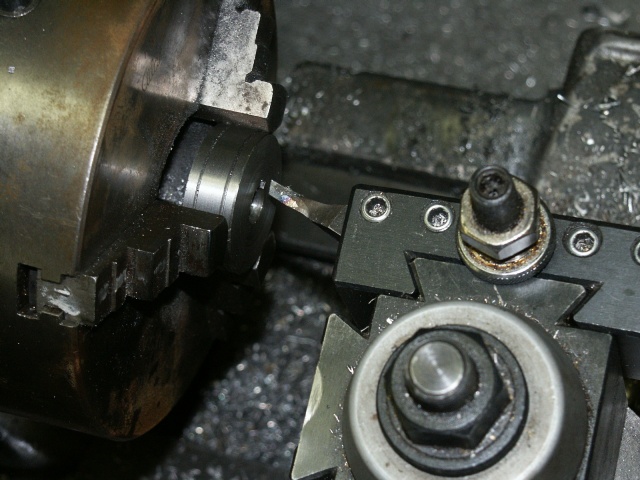| Scott's Atlas / Craftsman 101.07403 12x36" Lathe, modifications and projects. Stone Mountain, GA | Unique Visitors: |
 |
Here are three wire feed rollers. The right one came with the Airco and has grooves for 0.035 (0.9mm) and 0.045 (1.2mm) wire. I use a lot of 0.030 and 0.025 (0.8 and 0.6mm) so I needed more rollers. They have long been unavailable. The middle one was made on my 109 lathe using mild steel. The woodruff key slot was made with a jig saw; crude but it worked. I had used a 90-degree V-tool to cut the grooves. That worked, but did not grip well. I have also made one for a Clarke welder as to not have one with a knurled groove (better for aluminum). The left one is described below. |
 |
Here is a closeup of the left one. It was made out of 1 3/8" stainless steel. The steps to make it are as follows:
If your V-tool does not come to a complete point, you will have to do less of a cut. Start with 2/3 of the wire size and put a wire in the groove to test fit. This roller works perfectly. Using the 60-degrees makes the V-groove and the pinch roller form a perfect triangle so pressure is even on all sides. |
 |
Here is a closeup of cutting the woodruff key. It is easiest to do it on the back side of the hole as you can use the cross slide to advance for each pass. Here is the steps:
The parting tools are available. Look for a 1/4" square tool that has the end ground for parting. Usually they are ground on one side to leave 1/16" remaining a picture of a unsharpened blank is shown below:
A broaching tool can be used or made, but this is a cheap solution that works surprisingly well. |